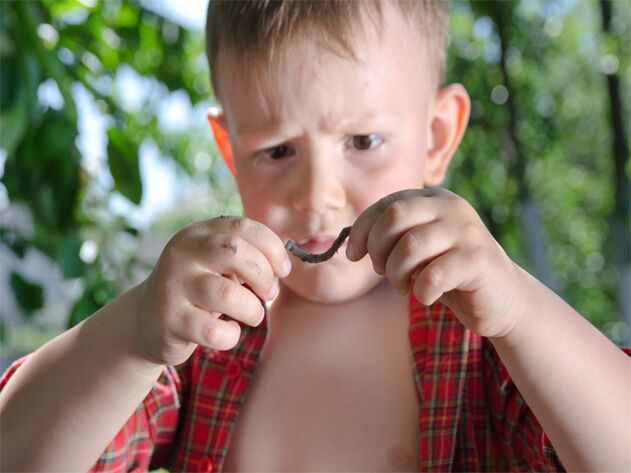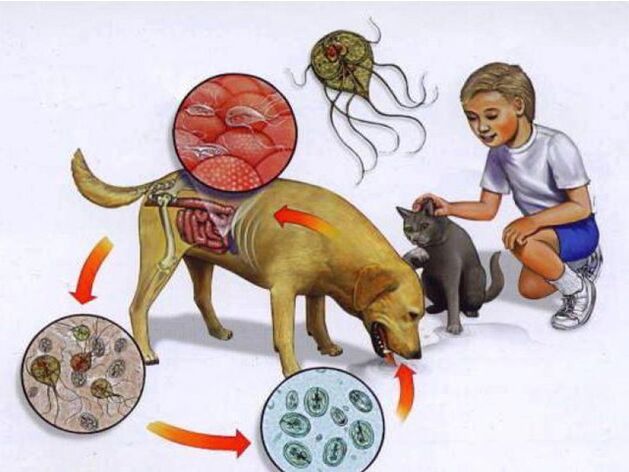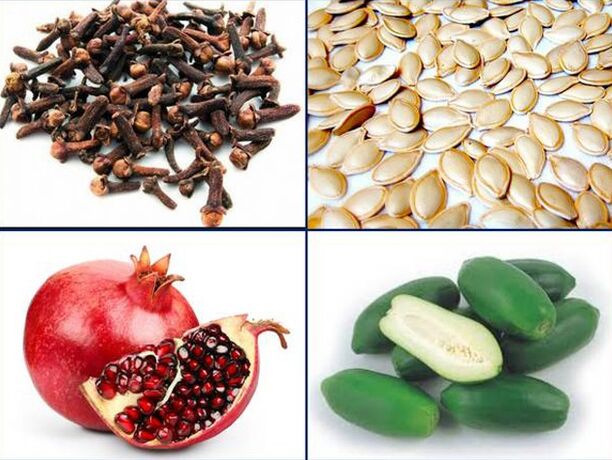There are many parasitic forms that enter the human body and live there. Worm infection in children is one of the most common diseases. Usually their weight is underestimated. They deprive babies of nutrients, cause allergies, intolerable intoxications, reduce immunity and damage the abdominal organs.

According to statistics, more than half of the population is infected with parasites, and among children there are many more infected. The early stage of the disease passes without symptoms - in a latent form. Worms in children, whose symptoms and treatment need to be learned and understood by parents, sometimes live in a person for many years without manifesting themselves in anything and are activated only by a decrease in immunity.
Spread of worms
The diseases that provoke the lower worms are called helminthiasis. No one is immune to them, often the infected themselves are to blame for the appearance of worms. Climate has the greatest influence on the extent of their spread. They are most comfortable in hot tropical countries. The number of parasites also depends on the socio-economic level: in underdeveloped regions with low levels of hygiene and medicine, especially many people suffer from helminth infestations.
It is generally accepted that helminthiasis is a disease characteristic of the lower social strata, living in unhygienic conditions, who have frequent contact with the land or animals - carriers of invasions. However, statistics disprove this claim: in prosperous European countries, the study found worms in one third of patients.
2 million cases of infection are diagnosed annually, and the figure of 20 million is based on the turnover of anthelmintic drugs. 80% of them are children. The helminths are viable, fertile, one female lays 200, 000 eggs a day.
Types of worms
There are a large number of worms - over 300, 70 of them are typical of our region, the rest were brought by travelers from exotic countries. All types of parasites adapted to inhabit the human body belong to three major categories:
- nematodes belonging to the class of roundworms most commonly observed in infants (they include pinworms, whipworms, Trichinella, roundworms);
- for tapeworms classified as cestodes (they include tapeworms, tapeworms, echinococci);
- to trematodes or fluke parasites that live and reproduce in the gut but can be delivered through the bloodstream to various human organs. Usually the intestines, liver, gallbladder near the stomach are most infected, but the worms reach the muscle tissue, lungs, even the brain and heart.
In the first place in distribution are blades that are round in diameter and miniature parameters - no more than 6 mm. They are located in the lower part of the colon. More than 24, 000 species of nematodes are known. The female can lay 150, 000 eggs a day. Their systematic movement and reproduction abroad of the intestine is the main reason for the risk of secondary infection with enterobiosis.
Infection with roundworms, which is the second most common, is inherent in preschool children and younger students. Adult worms look threatening: they grow up to 30 cm. The female lays about 100 thousand eggs a day. The larvae enter the body through unwashed hands, dirty food and water. They are transmitted by blood flow to all parts of the child's body and settle in them. This type of helminthiasis is quite dangerous for an unformed child's body. Ascariasis is often the culprit for allergic reactions in children.
Trichinella is less common in children. They are the cause of trichinosis, characterized by lightning-fast egg transfer through the body, causing damage to muscle tissue. The consequences of trichinosis are peritonitis, intestinal bleeding.
Sources and methods of invasion
Prevention of helminth infection in children is possible if you understand the information about the transmission of worms. There are actually several possibilities for their penetration into the human body. Most of it reaches a person through contact or food.
Many believe that strict adherence to the principles of personal hygiene will protect against helminthiasis. Unfortunately, this view is wrong. Children are most at risk of infection due to close contact with the perpetrators. Each of the sources of invasion has its own characteristics:

- with the contact-household way the larvae enter the body through infected people, through things, from animals;
- in the alimentary method the culprits are unwashed palms, water of dubious purity, contaminated food supplies;
- by transmission, worms are derived from blood-sucking insects;
- with active (percutaneous) - the testes of the worms overcome the connective tissues or skin from the soil or from tanks during the bathing process. Sometimes larvae in the air, along with dust particles, enter the respiratory system.
Despite the species diversity of worms, children become infected with them in approximately the same way. Eggs, larvae, part of the body or a whole parasite, when they reach a person, begin to feed and reproduce, their number increases in the absence of therapy. The health of the infected person deteriorates, he becomes the culprit for transmitting the invasion to others.
The eggs of the most common helminths - roundworms, pinworms, covered with a sticky capsule, stick firmly to the surface and stay there. The spread is happening very soon. Once on the palms and fingers, the eggs accumulate under the nails, from where they are transferred to the everyday things that a person uses. This infects all family members and the immediate environment.
Some types of worms are able to penetrate the placenta, infecting the fetus in the womb. Getting an infection from a mother suffering from enterobiosis, probably during childbirth. A breastfeeding child can be infected by sick relatives, although the disease is not transmitted through breast milk. There are also unusual cases of transmission of worm eggs by an infected person: during sexual intercourse or kissing, and contraception in this case is useless.
It is impossible to completely protect against helminthiasis: their larvae live everywhere. However, there is an opportunity to reduce the risk of disease for those who follow hygiene requirements, eat food that has undergone heat treatment, and regularly undergo preventive treatment for worms.
Identification of helminths
Infection with parasites most often occurs during the warm season, as babies vigorously explore their surroundings, spend all day outside, in the sandbox, sprayed in tanks, write with berries and fruits directly from the branches without worryingto wash your hands and fruits.
In adults, worms, before entering the body, must overcome a number of obstacles: saliva in the mouth, acidic environment in the stomach, immune protection of the intestine. In children, the protection is much weaker, which makes helminths easier to overcome. Parents should be aware of the signs of infection in their children. Most of them are aware of such a difference as gnashing of teeth at night, although this is not the only indicator. How do we know that a child has worms? You need to pay attention to the symptoms.
Common symptoms of worms
The presence of helminths in the child's body poisons him with waste products, which is why one of the main symptoms of the infection is considered to be increased fatigue, dizziness, refusal to eat, whims. The following general characteristics are typical:
- allergic skin reaction - rash, urticaria, eczema;
- digestive complications - alternating constipation and diarrhea, bloating, nausea, navel pain;
- reduction of protective immunity, recurrent colds, addition of fungal infection;
- manifestation of allergic-toxic response to vaccination;
- decreased hemoglobin levels.
Parents should be especially vigilant about the complex of these signs in a baby, for example, when acute respiratory infections or thrush are difficult to cure. In such cases, it is logical to assume the presence of helminth infestation.
In addition to the general symptoms of worm infection, there are individual signs of a certain parasite in a child.
Symptoms of roundworm
The main symptom of ascariasis in children is a dry cough with worms in children, combined with a skin rash, and two weeks later - a manifestation of general indicators of intoxication, pain in the abdominal cavity. A distinctive signal is the variability of the child's nervous and mental state.
Symptoms of pinworms
Shingles infection is declared as dehydration of the oral cavity. Infected children complain of irritation in the anal area, especially at night. The child scratches this surface, which is filled with inflammation. In girls, these symptoms are complemented by enuresis and vulvovaginitis. Appetite changes, stools are upset, the baby coughs, does not sleep well, his nervous system is upset.
Manifestation of signs of other worms
Trichocephalus is common in temperate, subtropical climates: whips prefer moisture. The signs are not very typical: the pain resembles attacks of appendicitis, the baby often has a desire to defecate and symptoms of colitis are observed. The consequence can be rectal prolapse, as well as severe anemia.
Hookworms are lovers of moisture, heat, they also prefer subtropical, tropical climates, in particular - the Krasnodar region. A symptom is a rash where the parasite enters the skin. Complicated by severe anemia.
Dogs are carriers of toxocariasis, the disease spreads everywhere. The symptoms are:
- abdominal pain;
- reduced vision;
- nervous system disorder;
- allergic reactions.
It can be complicated by bronchitis, pneumonia, bronchial asthma.
Echinococcosis is reproduced everywhere - on all continents except Antarctica. For a long time it is latent, the symptoms are nervous disorders, headaches. Serious consequences are disorders of the brain, lungs, liver, heart, kidneys. Helminth infestation in children whose symptoms are life-threatening for the child is treated surgically.
Trematodoza (opisthorchiasis, fascioliasis) is widespread along the coast, in river basins, the main source of infection are uncooked fish. The symptoms of the disease are characterized by jaundice, muscle pain, fever and allergic rash. The disease is aggravated by ulcerative gastroduodenitis, liver cirrhosis, purulent cholangitis, peritonitis, chronic hepatitis.
The symptoms of childhood helminthiasis are polymorphic, the signs are suitable for many diseases, so it is difficult to use only the clinical picture for diagnosis. More real results are obtained from laboratory tests - analysis for worm eggs, which must be repeated several times.
Age features of the disease
Worms in a baby
Helminths are usually found in preschool children aged one and a half or two. Babies are rarely infected with parasites from an infected mother - during intrauterine development, during birth, during feeding. This usually happens after 6 months, with the onset of additional feeding, active creeping movement. The kid does not miss a single microbe, bacterium, parasite. It is much more difficult to find helminths in infants than in children of different ages. The symptoms and signs of worms in children are manifested:
- the child's anxiety, disturbed sleep;
- constant fatigue, lethargy, general weakness;
- irritation and inflammation in the anus, and in girls - around the genitals;
- digestive disorders: constipation, diarrhea, vomiting, flatulence, colic;
- dizziness associated with intoxication of the body;
- weight loss, refusal to eat, although there are exceptions;
- pallor, white skin tone,
- eye shadows;
- rash on the body, mainly on the thighs;
- slight increase in temperature;
- exacerbation of chronic diseases;
- regular cough, regardless of respiratory diseases.
Such symptoms in an infant can signal not only helminth infestation but also many other diseases. Therefore, in order to confirm the diagnosis, it is necessary to perform a repeated examination of the stool at regular intervals.
The symptoms of worms in 2-year-old children are mostly similar to the general signs of worms. The introduction of larval and developing forms of worms in the child's body can cause great damage to health, because in infants the protective forces are just beginning to form, the child is unable to resist unwanted aggressors. The risk increases due to the fact that children are willing to try everything without knowing the principles of hygiene. Regardless of the type of worm, the manifestations of helminthiasis in two-year-old children are similar. This:
- skin rash;
- swollen lymph nodes;
- profuse salivation at night during sleep;
- sudden increase or decrease in appetite, accompanied by weight loss;
- unexpected nausea, intestinal dysfunction.
There are also common signs: irritation in the anus, in girls - in the genital area, intoxication, fatigue, decreased immunity, nervous disorders.
The symptoms of worms in children 3 years old are identical to the previous ones.
An important factor for the invasion of children from 3 to 5 years is their attendance in kindergartens, as well as contact with pets infected with worms. Children become infected with rarer helminthic pathogens while traveling to exotic countries or from relatives who have been there. The rapid penetration of larvae, eggs of parasites into the child's body is facilitated by:
- deficiency of vitamins, nutrients;
- lack of protein from food;
- poor quality food;
- reduced immunity.
The symptoms of worms in 5-year-olds are similar. On Dr. Komarowski's website you can see photos and videos on the treatment and prevention of worms, as well as read patient reviews.
Diagnosis of the disease
The appearance of the first symptoms suggestive of helminthic invasion signals the need for special tests. In clinical practice, sufficient attention is paid to the diagnosis of helminthiasis in preschool children and primary school students. The presumptive diagnosis must be confirmed using laboratory research techniques:
- clinical blood test, which aims to detect antibodies against certain pathogens of parasites;
- scraping for enterobiosis and stool analysis performed three times for correct diagnosis;
- analysis that assesses the intestinal microflora.
In a general blood test, they look at the color indicator. The diagnosis is confirmed provided that its index is higher than established, the number of eosinophils increases, hemoglobin, on the contrary, decreases and anemia is expressed. A blood test for enzyme-linked immunosorbent assay for parasites is performed on an empty stomach from a vein. The effect is almost one hundred percent infallible, reliable, even able to identify the type of worms, the damage caused to the baby's body by worms.
The analysis for helminth eggs and dysbacteriosis is performed on the basis of stool examination. Tests of feces for worms do not always give results, so they are performed repeatedly. Biological examination of sputum, bile, urine analysis, stool coprogram is used to detail the diagnosis. Opisthorchiasis is determined by examination of the contents of the intestine and duodenal intubation.
Additional diagnostic techniques include ultrasound of internal organs, X-rays, computed tomography, MRI. They help the specialist to determine the presence of helminths in the internal organs. The combination of these studies makes it possible to confirm or deny the diagnosis of enterobiosis. The earlier the diagnosis is made and the treatment of worms in children is started, the less the baby's health will suffer.
Healing from invasions by the traditional method
The serious consequences of helminthiasis make us approach the treatment of the disease responsibly, contacting specialists - parasitologist or pediatrician. Drug treatment consists of 3 stages.
The preparatory stage consists in the appointment of sorbents and antihistamines to cleanse the baby's body of toxic substances accumulated as a result of the life cycle of parasites.
Anthelmintic therapy consists of the choice of drugs depending on age, type of pathogen, stage of the disease. A single dose of the drug in the form of a tablet or suspension is usually prescribed. After 2 weeks the course is repeated.
Anthelmintic drugs are very toxic, so when prescribing them, as many precautions as possible should be taken so as not to harm the child's health. Dosage moderation is paramount. Self-medication is not recommended, the drug must be prescribed by a doctor, who can sometimes prescribe a combination of drugs. It is advisable to read carefully the contraindications of the anthelmintic agent.
The cleansing regimen is performed after the use of anthelmintic drugs, when the parasites die, leaving the body with feces. At this point in the baby's body there is a huge spray of toxic substances. Enemas, absorbers and choleretic drugs are prescribed for cleansing. At the end of the course of treatment it is necessary to take blood and stool again. If there are complications, the baby is registered for 3 years.
Folk remedies
Herbal healers have a long history of salvation from parasitic worms. Basic medicine recognizes the benefits of some of these drugs. However, not all of them give a guaranteed result. It is recommended to use them in consultation with a doctor. The following folk recipes are considered the most effective:

- use of pumpkin seeds;
- the use of hemp, pumpkin, linseed oil;
- enema with garlic, supplemented with milk;
- use of soda enema;
- carrot juice;
- tansy infusion: 3 tbsp. l. tansy is poured a glass of boiling water, insist for an hour, the infusion is given to the child to drink 1 dessert liter. three times a day; overdose is unacceptable so that there is no depression of the nervous system;
- Birch tar;
- herbal infusions, wormwood enemas.
Precautions
In order to protect the child from helminth infestations, certain rules must be strictly observed:
- teach your baby to wash his hands well before feeding, after a walk;
- systematically trim nail plates;
- change the child's costume more often;
- keep clean household items, toys;
- it is not desirable to keep tetrapods in the house;
- learn not to take fingers, toys in your mouth on a walk;
- once a year to carry out prevention of the whole family in the form of medication.
Worm infestation is a serious problem. The disease is quite common in the world, especially children are susceptible to it. The disease can last for years, causing great harm to the baby's health. Worms release toxins in the course of their existence, which leads to the appearance of various diseases that bring the child a lot of discomfort and unpleasant sensations. That is why parents should notice the symptoms in time, start treatment with the help of a specialist.






































